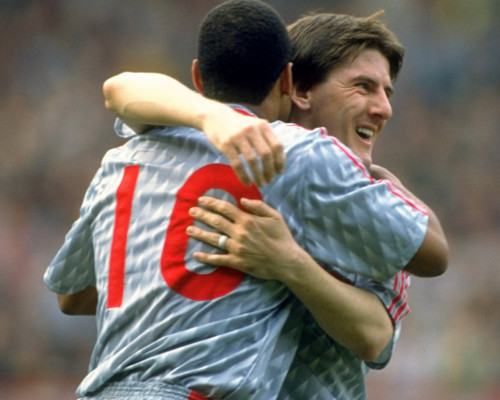On this day: Barnes' Reds legacy begins
On this day in 1987, Kenny Dalglish prepared for life without Ian Rush by swooping to sign John Barnes - who would go on to become one of the club's greatest ever.
The England winger had long been one of the most coveted players in English football, having been the star of a Watford side under Graham Taylor.
With John Aldridge in place to score the goals in the absence of Welsh legend Rush, Barnes was the second piece of the jigsaw to provide the ammunition down the left wing.
And with Peter Beardsley soon to arrive in L4, the trio went on to form one of the most devastating forward lines in both the club's and English football's history.
In fact, anyone who thought that the Jamaican-born England international would struggle in the shadow of Anfield's greats was swiftly proven wrong. Within nine minutes of arriving on the pitch for his debut he'd set up a goal for his new teammate Aldridge, against Arsenal at Highbury.
In October, just a few months after arriving at the club, Barnes was destroying table-topping Queens Park Rangers with what he rates as one of the greatest performances of his career, scoring two fabulous goals as the Reds won 4-0 - with Rush an excited spectactor watching in the Main Stand as a fan.
Liverpool's frontline that season was simply irresistible as the Reds finished nine points clear of rivals Manchester United and scored 87 goals.
Of those, Barnes got 15, but his main role cutting in from the left wing was to tee up Aldridge, who scored 26 goals in the top flight alone. In his first season at the club, Barnes was named Football Writers' Player of the Year and PFA Players' Player of the Year.
The statistics and awards do little justice, however, to his elegance in floating, tricking or dodging past defenders, like a skilled boxer adapting his method to each opponent and avoiding them.
The entire attack in fact rotated around, jabbing at defences until they found the key weakness - whether it was Barnes' pace and skill, Beardsley's guile or Aldridge's knack for finding the space which would allow him to tuck away the chances provided.
It was most notably shown in a 5-0 win against Nottingham Forest which all but ensured the title, and was described by some observers as the greatest performance they'd ever seen.
After helping the club win the FA Cup the following season in the aftermath of the Hillsborough tragedy, the 1989-90 season was John's most prolific campaign in a Liverpool shirt.
With Aldridge now departed for Real Sociedad, the No.10 took over extra goalscoring responsibilities as well as his creative ones, becoming the club's top scorer with 28 goals.
For his exploits, Barnes was voted Football Writers' Association Player of the Year for a second time.
Following Dalglish's departure, Graeme Souness took over as the club's manager and sadly that spell coincided with a series of injuries which denied the new boss one of the game's outstanding talents.
After playing a major part in the club getting to Wembley, most notably his last-gasp free-kick against Portsmouth at Highbury, when Ronnie Whelan netted, a freak calf injury ruled Barnes out of the 1992 FA Cup final victory against Sunderland.
Just weeks later, a worse injury would irrevocably alter Barnes' career. In a warm-up game for Euro 1992 he ruptured his achilles tendon. So bad was the issue that it left him with a six-inch scar and robbed him of the pace which had made him an almost unstoppable opponent.

After the departure of Souness at the helm, Roy Evans found a way for him to thrive in a new-look Liverpool side.
Evans moved Barnes into a central midfield playmaking role, recognising that despite lacking the pace he once had, it was also his control and passing ability which set him above other players.
Barnes became a key man in the swashbuckling Reds team of the mid-1990s, anchoring a midfield which included Jamie Redknapp alongside him and Steve McManaman in an advanced role.
With Barnes dictating play in the middle and McManaman allowed to excel in the areas the new playmaker had once occupied, Liverpool started to play what was arguably the most attractive football in England. The League Cup victory in 1995 seemed to promise the chance of a new era of Reds dominance.
However, further silverware would prove elusive. The 1995-96 season had some notable highlights, but concluded with a 1-0 defeat by Manchester United in the FA Cup final.
After making a last appearance for the club as a substitute against Sheffield Wednesday on May 11, 1997, the legacy of Barnes lives on and he is quite rightly regarded as one of the club's greatest ever players.
Click here to view our John Barnes picture special.



